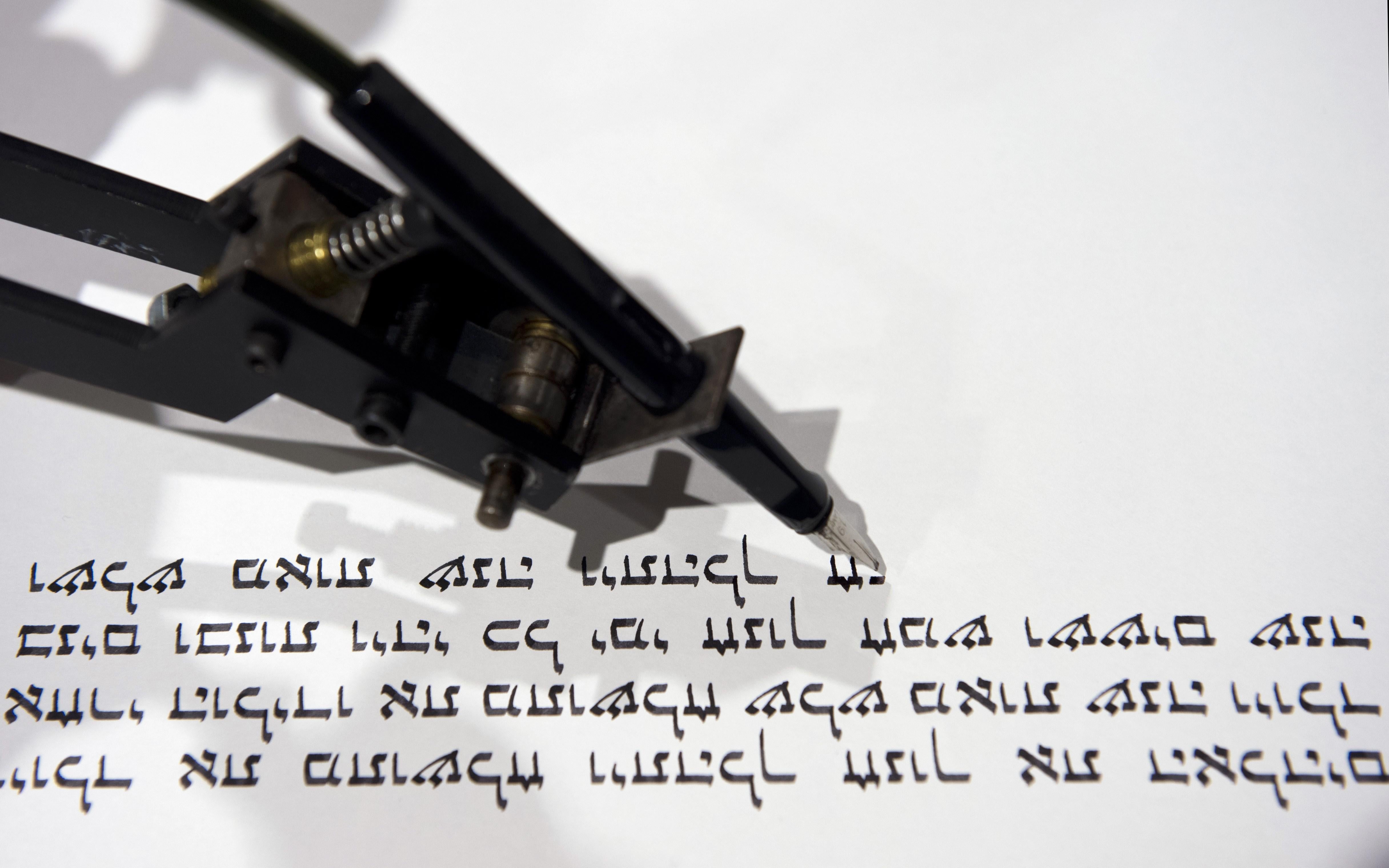In honor of its 150th anniversary, Congregation Beth Elohim in Brooklyn, New York, commissioned the city’s first Torah written by a female scribe. Traditionally penned (or quilled, to be more precise) by a trained man, called a sofer, writing a Torah is time-consuming, and the rules are strict: It must be written on parchments using a quill dipped in ink in a specific style and spacing—all Torah scrolls must look alike. It typically takes about a year to write the 304,805 Hebrew letters that make up the five books of Moses with the proper concentration. So, for lots of reasons, I was pretty excited when I ended up being the first person to read from the scroll during the holiday celebrating the Torah the following year.
Now imagine if it were written by a robot!
Germany may be busy celebrating a World Cup win, but the country is also hosting the world’s first Torah-writing robot. While the end result of its three-month endeavor is not kosher for use during religious services—there are prayers one traditionally recites while writing, among other issues—the technological scribe is hard at work in the Jewish Museum in Berlin.
Created by Robotlab and adapted with the help of an Israeli graphic designer, the robot is part of the exhibit “The Creation of the World,” which focuses on the role and significance of sacred text in the Jewish tradition—Rabbi Reuven Yaacobov, a sofer, is in a nearby room writing his own scroll. What’s most interesting about the robot is the attempt to mimic the act of people like Yaacobov—instead of using any fancy digital printing, it adopts the human act of writing, right down to the quill.
For Robotlab, that’s the point:
“bios [bible]” is focussing on the questions of faith and technical progress. The installation correlates two cultural systems which are fundamental for societies today—religion and scientific rationalism. In this contexts scripture has all times an elementary function, as holy scripture or as formal writing of knowledge.
In computer technology ‘basic input output system’ (bios) designates the module which basicaly coordinates the interchange between hard- and software. Therefore it contains the indispensable code, the essential program writing, on which every further program can be established.
The robot will be on display at the Jewish Museum in Berlin through January 2015.
